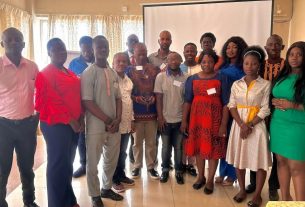Chun-Feng Yang, Wuhan Botanical Garden of the Chinese Academy of Sciences, discusses their article: Nectar sugar concentration contributes to structuring bumble bee and plant interactions
Why do flowers vary their nectar sugar concentrations?
Producing nectar entails significant energetic costs for plants, with investment strongly correlated to sugar concentration. It is therefore believed that interspecific variation in nectar sugar concentration is subject to selective pressures, though current understanding remains limited. From a pollinator reward perspective, higher sugar concentrations offer greater energetic returns. However, for bee pollinators, elevated viscosity in concentrated nectar reduces ingestion efficiency, and this effect is exacerbated by elongation of proboscises. Consequently, interspecific nectar concentration variation likely reflects adaptations to different pollinator syndromes.
The view of community structure
The utilisation of floral resources by a diverse range of bee species within communities should exhibit structured patterns to facilitate stable coexistence. Previous studies demonstrate that floral traits (e.g., corolla tube length) mediate bee-flower interactions through morphological matching. Given that the plants display substantial interspecific variation in nectar sugar concentrations, and various pollinators may vary their preferences in terms of nectar sugar concentration, could this trait be a key determinant structuring bee-flower interaction?
Our study system
We conducted field investigations in an alpine meadow from the Hengduan Mountains of China, one of the global biodiversity hotspots. The community sustains more than 120 insect-pollinated flowering plants and 10 bumble bee species. Through pollination observations and floral trait measurements (including nectar properties), we assessed whether nectar sugar concentration determines the structure of bumble bee-flower interactions and how plants optimise their pollination strategies to achieve reproductive success.

Our key findings
We found that bumble bee visitation rates are very sensitive to nectar concentration gradients but show no significant correlation with corolla tube length. However, both traits function in shaping bee-flower interactions. Specifically, long-proboscid bumble bee species tend to visit flowers producing dilute nectar, which always have comparatively long corollas. Additionally, flowers with concentrated nectar had extended floral longevity and received visits by more diverse pollinator species, potentially due to reduced nectar depletion rates because of high viscosity.
Significance of our study
In extremely diverse communities, discovering how resource-use varies among species exploiting similar resources is fundamental to understanding species coexistence. Our work elucidates nectar sugar concentration’s role in structuring bee-flower interactions, providing novel insights into biodiversity maintenance in this global hotspot with diverse species of bumble bees and flowering plants.


